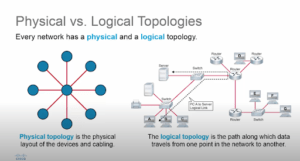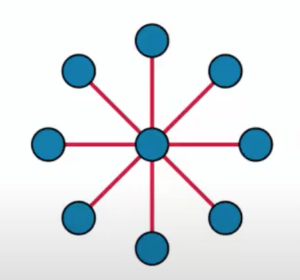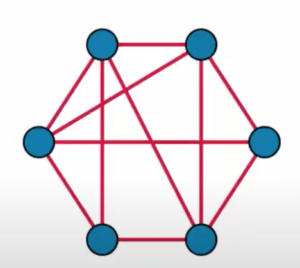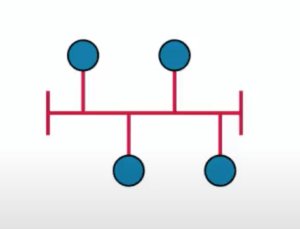Network diagrams form the blueprints for security programs in the 21st Century. Unfortunately, creating and maintaining these network architecture diagrams has become the IT equivalent to bookkeeping – it’s a fairly simple task that few people enjoy.
To be fair, documenting one’s network is tedious. Also, today’s fast-paced digital environment requires most businesses to expand rapidly. Digital transformation – on any level – significantly increases a company’s attack vectors. According to Forbes Insights:
The [cybersecurity] challenge comes down to this: making data and applications accessible to the right users in a way that is fast and efficient—and secure. It’s a tug-of-war over access and control. Simply trusting vast swaths of the enterprise’s internal landscape won’t work because the ground is constantly shifting as employees move to new roles and require different access privileges. New platforms and applications appear as well. The network keeps getting bigger—and so does the attack surface.
That said, ignoring your network diagram upkeep is a critical mistake, especially if your business is small. Without a small business network setup diagram, you become an easy target because your security team won’t be able to foresee and prevent a breach.
In this guide, we’ll define what a network diagram is and how it works. At any time, feel free to reach out to our virtual security advisors for customized care. Cybersecurity experts at RSI Security are intimately knowledgeable about network diagrams and telecom operations.
Request a Consultation
What are Network Diagrams?
Network diagrams refer to the documentation that identifies the flow of data within an organization. Project managers often refer to network diagrams more broadly, but in the case of cybersecurity, it pertains to data flow across telecommunication hardware.
These network infrastructure diagrams are essential to any cybersecurity program. Without this information, CISOs and security advisors cannot identify system vulnerabilities.
Network diagrams exist in two parts or topologies:
- Physical Topologies
- Logical Topologies

Physical Topology
Physical topology in network diagrams demonstrates connectivity. In most physical topologies, there is a hub – such as a wire and central server – tying together the entire network. There are four different setups, which we will discuss in a bit.
Logical Topology
In a network, data moves among many devices, from servers to printers to mobile devices and more. Your logical topology resembles a digital roadmap of how data travels between these devices and hubs. As a general rule, logical topologies are more detailed than physical ones.
What’s Included in a Physical Network Topology?
Essentially, your network diagram needs to account for every device, as well as any digital path that connects each device. This list is by no means exhaustive but can help you understand what is included in a network topology.
Server
Servers house your data. Depending on the size and nature of your organization, you either employ onsite servers or cloud server hosting. Either way, your servers form the “ground zero” of your network.
While your server should be well-protected, most security breaches occur outside the server and attempt to infiltrate through data interception or back door intrusions. As such, network diagrams help you visualize all possible vulnerabilities.
Computers
Employees remain your biggest cybersecurity risk. From managing email inboxes to logout procedures, employee responsibility can make all the difference in your cybersecurity program. Quantifying that risk requires your team to understand what data passes between employee computers and the rest of the network.
Additionally, network architecture diagrams are instructive for employees during their mandatory training. Failing to logout or clicking unknown links can create opportunities for lost or stolen data.
Mobile Devices
Mobile devices present an even greater risk. It’s unusual to lose a company computer, but it is more common for careless personnel to leave mobile devices lying about. If employees take company devices off-campus, the risk is even higher.
Network diagrams should track what data passes back-and-forth from these phones/tablets.
Ethernet and Router
Cable and wireless networks, along with switches, represent critical hubs in an organization’s digital framework. These components are especially relevant when creating a logical topology.
Printers
Many IT personnel forget that printers also send and receive data. As such, diagrams should document how company printers fit within the network.
Network Security Measures
Firewalls and authentication tools also form part of the network architecture diagram. These components identify access points and remedial response measures in the event of a breach or malicious intrusion.
Web Service or Presence
All client-facing digital tools represent additional attack vectors. No business can survive without these capabilities, and as such, it’s essential to document what data passes back and forth.
When it comes to compliance, most agencies are concerned with the security of consumer/client/patient information passing from web services to the rest of the network. In this case, network diagrams also represent consumer data mapping.
Physical Network Architecture Diagram Topology
In a physical topology, your goal is to document how each data point connects to the others. Cybersecurity experts use these diagrams to understand how different data points could become compromised and how to create security level depth. These topologies also illustrate how the entire network continues to function should one data point fail.
Star
In a star setup, a single data point (such as a server) is the central hub from which everything else flows. This topology is the most common and simple to manage. However, more intricate networks may not be a good fit for this model.

Mesh
The mesh model is the most complex, yet it provides the most redundancy. In other words, no one data point is fully dependent on another. There always exist “backup” data points to maintain operations and respond to cybersecurity threats.

Ring
As the graphic above demonstrates, the ring model interconnects all data points in a circular format. The advantages of this approach are continuity and protection for every third device.

Bus
The bus topology connects every data point to all other data points. This model is the least secure but is sufficient for smaller operations that manage a limited amount of data.

Hybrid
Many modern network diagrams employ a hybrid of a few of the models described above. The reasons for merging these topologies include, but are not limited to:
- The organization is large and must accommodate many different cybersecurity needs and employee access points.
- Some work teams are less dependent on the company’s digital infrastructure than are others.
- A company manages many different types of data with varying levels of confidentiality and access requirements.
Logical Network Architecture Diagram Topology
Each device and data point enjoys a certain amount of access to the network. In a logical topography, you must document each company device accordingly. Traditionally, logical topographies include IP addresses, cable specs, and connection types.
This model can be the most exhausting to update when the company adds devices, personnel, or software platforms. But keeping network diagrams up-to-date is critical to protecting and maintaining company processes.
Company Processes
The quality of your network diagram is often an indicator of the maturity of your cybersecurity. Armed with the latest network diagrams, information security officers can quickly assess your risk and recommend the best tools for your organization.
Communication Tools
Not every communication tool – device, video conferencing software, social platform – is equally secure. Many of these tools are only as secure as your network. As such, your network diagram can help you secure your internal communication.
Productivity and Information Management Software
Depending upon the nature of your business, the productivity and information management platforms you use either enhance or decrease your overall security.
Updates
Maintaining program and device updates is a crucial part of maintaining security in your network. Most diagrams document potentially-outdated hardware and programs for the integrity of the entire network.
Policy
Accurate network diagrams inform company policy on information security and data privacy. Your organization must train employees on policy and produce statements for the greater public to generate awareness for cybersecurity risks.
Data Privacy Compliance
Any compliance agency requires an up-to-date network architecture diagram. Your network documentation improves internal and external security, and it will also secure third party recognition for your data privacy excellence.
Recap: Elements to a Great Network Diagram
Great network diagrams are first and foremost complete and accurate. Though tedious, maintaining your network diagram keeps your cybersecurity on point and improves access to the right personnel within your organization.
RSI Security is committed to assisting companies with their security programs, to include building and maintaining small business network setup diagrams. For more information about our security advisory services, contact us today.
